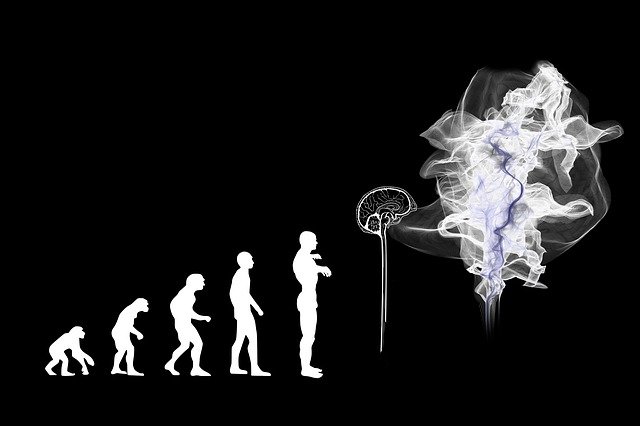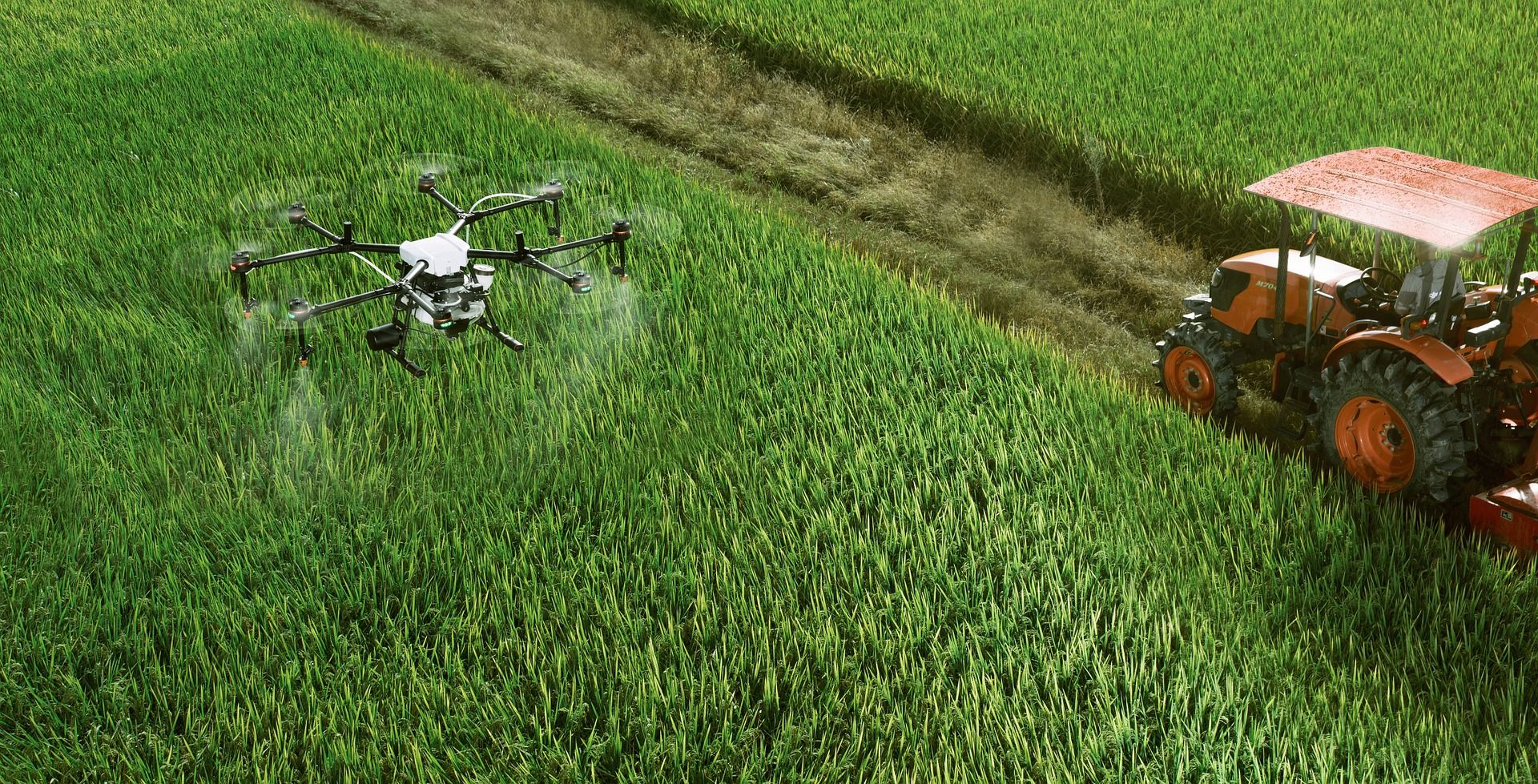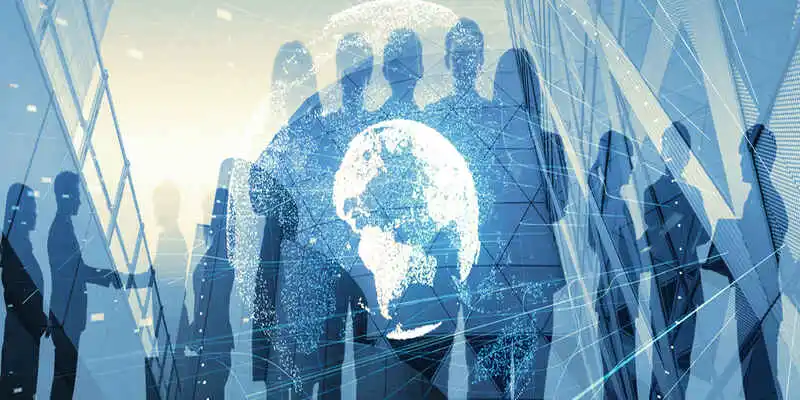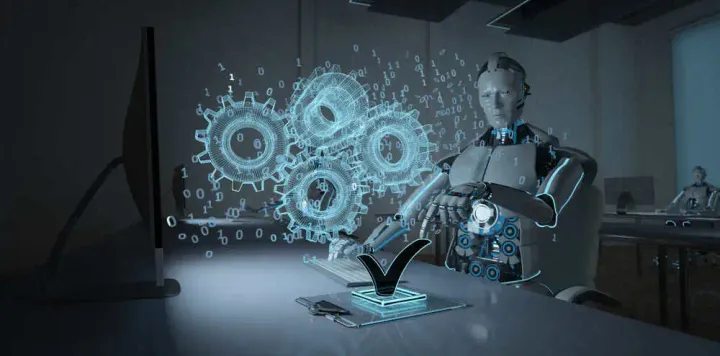How Can AI Help Developing Nations?
In the past decades, AI has been revolutionizing many aspects of our modern life, from workplace productivity to the way we travel. This article discusses how AI help developing nations, develop and grow as countries develop better infrastructure and use this new tool as a means of economic growth.

Since John McCarthy introduced the term “Artificial Intelligence” in 1955, it has been revolutionizing our lives at each instant. Today, it has elevated us to a level where we have witnessed how IBM’s Watson and Google’s AlphaGo defeated humans in Jeopardy and Go. We have even observed AI tools translating speech and engaging in debates. We have much evidence of how AI disrupts industries with process automation, where humans are being replaced with machines. Thanks to all the tech giants of the well-developed world as they staked their investments in AI and enabled us to witness its potential. However, in developing economies where the work nature is somewhat different than that of a developed country, what are the inferences of AI growth? Many jobs that AI is displacing in the developed world might not primarily exist in abundance in developing countries. Even if they exist, a developing country does not have enough resources to embrace AI. Then how a developing nation can avail and get entertained with AI potential? Let’s discuss this in detail!
AI to Reshape the Landscape of the World
Just visualize yourself being a farmer in Ghana, trying hard to find out the reason behind the leaf damage to your crops while looking for some evidence of pests that could be a significant threat to the food security of your nation. Or imagine you are living in Kenya and trying to convince the lenders about your creditworthiness so you could borrow some loan to work on your new business idea. Or imagine yourself in Mozambique with few cancer symptoms but don't have enough resources to go for its highly expensive mammography. As mentioned earlier and many other scenarios would not have been achievable for a developing nation if the world was not introduced to the most innovative technology called “Artificial Intelligence.”
The developed countries hold supremacy in making quick advancements in the AI revolution, whereas emerging countries are left far behind in technological advancements. Not just in advancements, they are even far behind in AI’s adoption.
Statistical Evidence – As per a report in October 2021, 44 developing economies have demonstrated their willingness to compete in the worldwide AI race by including AI plans in their national strategies. Oxford Insights shared AI Readiness Index in 2021, where it ranked the willingness of 160 countries to employ artificial intelligence in public services. The US is at the top of the ranking list, whereas Singapore comes at 2nd, followed by the UK. The developing world regions, including sub-Saharan Africa, Latin America, and some South Asian countries, are at the bottom of the index with the lowest scores.
Why is the Developing World Slow at Embracing AI?
The technology gap between the developed and developing world has several reasons – the AI systems demand the investment of billions of dollars along with diversified skills that are generally found in developed countries like the USA and Europe. Being economically stable, these countries are capable enough to invest more in AI research and lead the way by developing and employing modern AI models. On the other hand, a developing nation mostly suffers from the vulnerable availability of primary provisions like health, education, nutrition, and sanitation. These urgent priorities of an economically unstable country consume a big chunk of the budget overriding enough investment in digitalization. The neural networks used in AI systems, for instance, are data-hungry as they can learn about a task once they are fed with millions of examples. AI models demand complex computing infrastructure and hardware unaffordable for emerging economies. However, AI can benefit a developing nation by supporting it in the easier and quicker provision of its basic needs. Let's look at how the developing world can utilize AI potential with its limited resources!
AI can Help a Developing Country Attain Sustainable Development Goals (SDGs)
With the great focus on the notion that “no one will be left behind," the United Nations, along with its partners, formulated 17 Sustainable Development Goals (SDGs) in 2015. These SDGs targeted to be attained by 2030 aim to eliminate poverty and hunger and improve healthcare, education, and water quality while ensuring human safety. For a developing country that lacks reliable infrastructure, resources, and even policies, it’s pretty hard to achieve these goals. Integrating AI with SDGs will lead a developing country to achieve a few of its main targets, as discussed below. Research by Nature claims that by employing AI, a country can attain 79% of the sustainable development goals.
AI to Improve Healthcare Facilities
In developing countries, there is a lack of skilled healthcare staff, so the available doctors are overworked that often leads to the poor medical care of patients. WHO claims that 50% of the global population is facing the issue of inaccessibility to healthcare facilities. The report further reveals that 25% of the GBD (Global Burden of Diseases) falls on the African Continent; even then, just 3% of the global healthcare workers are engaged in its hospitals. On the other hand, the number of smartphone connections is predicted to hit 700 million by 2040. Papua New Guinea- another developing country, has just one doctor to treat 18,903 patients. With the accessibility of mobile phones and the internet, a developing nation can leverage AI and ML to deal with the inadequacy of healthcare resources and upgrade the infrastructure of local healthcare.
Moreover, in developing countries, hospitals generate massive data on a daily basis, but unfortunately, they lack the proper infrastructure to store this data. Consequently, the records are not appropriately managed. If managed somehow, the test results are handed over to the patient without keeping any copy at the hospital. Here AI can be of great help by collecting, storing, and tracking data much quicker than humans.
By using ML, healthcare staff in hospitals can diagnose and screen for lethal diseases like cancer, leading to reduced physician error and early treatment. In the healthcare department, the developing countries mainly face a resource crunch. For instance, breast cancer, the second most widely spread cancer worldwide, is too expensive for a developing nation to get a screening mammography. Moreover, a developing country lacks in necessary equipment and expertise. Using AI, the mammograms can be translated 30 times faster with 99% accuracy reducing the treatment cost and improving the survival rate through earlier detection.
Use Cases
- Indian-based company Niramai offers a cost-effective method to detect breast cancer using Thermalytix – an AI-powered diagnostic engine. This AI-based method is a better alternative to highly expensive mammography.
- Nigeria-based company Ubenwa has introduced an AI app that analyzes the cry sounds of infants to identify their respiratory and neurological disorders called “Asphyxia." This app issues warning signs at a very early stage of this disorder, helping save infant lives from the third-largest infant killer disease worldwide.
- In Tanzania, a non-government organization has developed an AI-based application to help community health workers provide personalized information to pregnant ladies, resulting in reduced newborn mortality.
AI for Natural Disaster Management
A natural disaster is a dreadful reality that impacts the lives and properties of millions of people. WHO claims that annually around 150 million people are affected by natural disasters. These catastrophes caused $268 billion in global economic losses in 2020. A developing nation has to face severe problems when some catastrophe hits the area because of the lack of resources to compensate for the losses. In Nepal, for instance, Kathmandu city faced severe damage when it was struck by an earthquake of 7.8 magnitudes in 2015. As a result of this catastrophe, above 8,000 people lost their lives. The disaster impact could be alleviated if the country was aware of and well-prepared for the upcoming tragedy. However, after this calamity, drones were used to estimate the damage and accelerate the rescue mission.

AI-based algorithms help in predicting any upcoming calamity by integrating multiple data sources. For example, propagation modeling can be integrated with seismic sources and deep learning algorithms to predict the magnitude of an earthquake at a specific location. For disaster management, the first responders of the developing nation can employ predictive models to automatically evaluate the behavior at a large-scale through various data sources like news, social media, and web forums. Hence, they can timely organize reconstruction efforts and deliver vital supplies using collected data. Together, AI and drones can automatically assess the need for the area and reconstruction. Once the data is accumulated through aerial mapping of the drone, it is processed and fed into the advanced ML algorithms. By integrating drone images and aerial mapping with ML, the team of the first responders can shape region modeling and infrastructure with greater accuracy.
Use Case
Google – the most renowned tech giant, has introduced an early warning system for predicted floods to help reduce the expected losses. Its pilot program was initiated in Bihar – a rural area in India that is most often hit by floods. Based on the river's trajectory and satellite image, Google creates a predictive model of the regions potentially in danger of being hit by the flood. Based on this prediction, flood warnings are issued. In 2020, when the flood was predicted to hit the Bihar region, the government generated flood alerts three days before the event. Hence, the residents had 72 hours to take precautionary measures. Consequently, Bihar residents remained relatively safe, with just 25 deaths reported compared to 2019, when the number was 130.
Smart Farming
The emerging countries badly need a food source to feed their poor nation. AI offers developing countries an excellent opportunity to increase productivity, reduce labor costs, and improve the lifestyle of people through “Smart Farming.”
The monitoring of crops is more effective if farmers use AI tools. Several AI apps guide the farmers to get the best results using their limited resources. They can better predict the ideal time for sowing, harvesting, and weeding. AI tools also help observe each plant separately and spray pesticides just on the infested plants rather than spraying across a considerable area of crops, thereby reducing their costs on pesticides and other resources.

In India, many farmers in rural areas employ AI tools to predict better, resulting in improved yields. The agribusiness industry can also show remarkable growth through process automation. India reported an increase of 30% per hectare in groundnut yields when the farmers started employing AI.
Use Cases
- In poor Indian villages like Maharashtra, Madhya Pradesh, and Telangana, the project of Digital Agriculture by Microsoft has been successful. A Sowing App incorporating ML and Business Intelligence powered by Microsoft's platform "Cortana Intelligent Suite" is helping farmers by informing them about the most appropriate days for sowing. This AI-based facility does not require any significant investment from poor farmers. They just need a mobile phone to receive the text messages from this app by Microsoft. Through this app, the farmers in the developing world are getting tremendous benefits as they can forecast the best sowing dates leading to improved crop yields. The app also enables the farmers to anticipate pest attacks or any other probable risk like monsoons, and hence they can plan and act proactively to avoid any forthcoming losses.
- Kenya-based company Apollo Agriculture is helping small-scale farmers through their mobile phones. Apollo employs Satellite data and ML (machine learning) to provide the farmers with agricultural loans. The app also delivers personalized agronomic advice and insurance to small-scale farmers hence helping them maximize their profits.
AI to Deliver Quality Education
The developing world usually suffers from a shortage of schools and qualified teachers. It's a bitter truth that education is beyond the access of several poor children in a developing country who have to walk several kilometers to reach school. Therefore, they remain less educated with poor academic standing, leading to a worse economy. There is a great need for resources and experienced teachers in schools. The lack of resources and unavailability of a school in the surroundings in rural areas is creating education gaps.

The developing world must sort out the ways to catch up with the well-developed world academically. In this scenario, AI applications can do miracles. There are more than 750 million uneducated adults primarily found in the developing world. Here AI can bring significant positive change in their lives. Online tutoring services with Personalized learning assistants enable the students to get access to learning while staying at home.
Use Cases
- Daptio – is an Africa-based company that supports the students in learning remotely. It designs its curriculum based on the students' data, like their strengths and weaknesses, enabling them to get personalized learning.
- Eneza Education– is another Kenya-based AI-powered learning platform that delivers lectures to above 860,000 subscribers. Students get their lessons and exam papers via text messages or web communication on their mobile phones.
Pollution Reduction
Pollution is a worldwide issue, but the developing world has to face it more. The developing countries have more pollution as they lack the resources and technology to fight it. If not treated well, water pollution can increase the death rate in a developing country. Providing clean water is one of the central SDGs. Here, again AI can assist predict the occurrence of contamination and measuring it in water resources. Hence, AI can monitor improving water quality and help the nation to get clean water.
Use Case
Indonesia-based company Gringgo employs AI-powered image recognition technology to increase the rate of plastic recycling, decrease the ocean pollution caused by plastic and reinforce waste management.
How can the Developed World Help Developing Countries by using AI?
In developed countries like USA and Russia, AI has captivated human lives within the past few years. It has agitated several conventional industries, from Alexa to autonomous vehicles, by delivering automated and economical solutions. With such a growing landscape, it must be the top priority of well-developed countries, high-tech companies, and international bodies to concentrate more on creating AI systems that could drive systemic transformation in developing countries. While many developed countries have employed AI to devise state-of-the-art technologies, few countries are striving hard to make a significant impact in developing countries by using AI. Let's look at a few initiatives the developed countries are taking to help the developing world.
Zipline – a startup in California, has introduced a national delivery system using “Drones.” These drones dispatch medicine and blood to medical centers of the far-off African country Rwanda, which is landlocked and wrecked by diseases and poverty. Its latest drone can dispatch more than 500 deliveries daily from each delivery center. Once an order is received, a Zipline drone can be launched within ten minutes, equipped with high-tech computer vision. As reported by Zipline, this drone system resulted in a 95% reduction in blood wastage in Rwanda. This startup is currently expanding its project to other developing countries like Tanzania, where it provides rabies vaccines, anti-venom, and several other medicines via its drones.
Education is the most significant facet where AI can bring revolution. Many companies in the developed world are creating 1-on-1 tutoring software or learning apps offering quick, personalized access to knowledge. Carnegie Learning is a company offering the students to learn without any tutor via automated machines. It enables the students to get knowledge anytime, anywhere. Developed countries invest millions of dollars in ed-tech firms like Quizlet and Newton.
One Concern – a startup in California, developed Seismic Concern – a predictive AI program. This program can rightly predict earthquakes/seism and is finding the solutions for other catastrophes like floods and wildfires.
With all these efforts, we can hope that the developed world will deliver medical, educational, and other needful resources to the poor regions in Third World countries by using AI.
Wrap Up
While the developed countries are leading the way in technological advancements, the developing countries are far behind in the AI revolution. AI has enormous untapped potential in humanitarian areas, and developing countries with limited resources can get a multiplier impact through it. Besides disaster management, medical care, education, and agriculture, AI can also alleviate pollution, poverty, and starvation. If appropriately adopted, artificial intelligence can enhance the quality of life for the local people in the developing world. Therefore, it is high time for governments and non-government organizations to leverage AI in its real essence and let it cause a snowball effect.
Moreover, if the world wants to get the actual value of "Artificial Intelligence," participation from the developing and developed nations at an equal level is a prerequisite. Simply speaking, the developed countries must cooperate with the developing countries at the technological and financial levels. Realizing this fact, many Startups in the well-developed world are characterizing a humanitarian approach to delivering AI-based solutions to the developing world. AI stakeholders must acknowledge the strengths and distinctions of the developing countries along with the AI limitations and generate localized solutions to solve their issues. If this approach is adopted at large scale, the commercial and societal impact of this positive change could probably be beyond all imagining, providing lasting benefits to the entire world.



